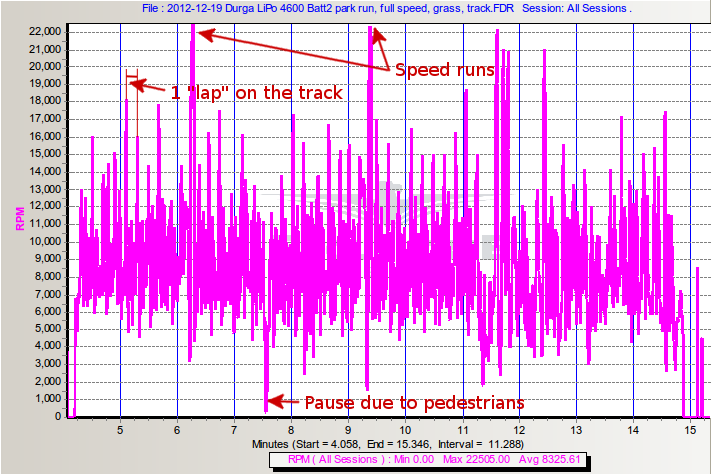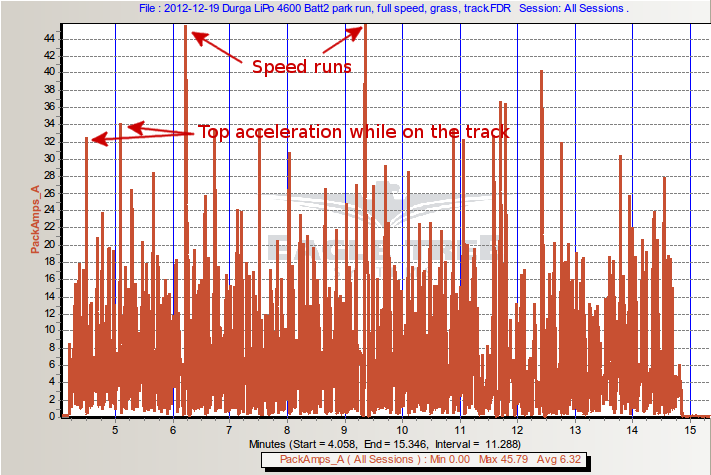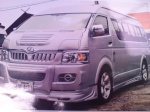
Search

Who is online?
In total there are 2 users online :: 0 Registered, 0 Hidden and 2 Guests None
Most users ever online was 301 on Thu 21 Oct 2021 - 11:24
Latest topics
» RC Submarine: Russian Akula Class by redboat219 Tue 27 Sep 2022 - 11:43
» Land Rover Defender D90 photos and details only (picture intensive!)
by babyboy Fri 25 Jun 2021 - 16:39
» [Offroad Bashing and Rally] Offroad Bashing and Rally at Tampines Track 12 Jan 2020 - 0900hrs
by boolean21 Sat 11 Jan 2020 - 10:15
» [Scale Trail] Woodgrove Ave - Sunday 20 Oct 2019 0900hrs
by boolean21 Sat 19 Oct 2019 - 16:31
» vHOBBY RC videos
by CraftRC Fri 21 Jun 2019 - 21:32
» Suzuki Samurai 3D Printted project
by CraftRC Sat 4 May 2019 - 18:39
» WTS : Redcat Gen 7 Pro
by staypuft Mon 7 Jan 2019 - 11:31
» Hello all! Dan here
by csd8888 Fri 5 Oct 2018 - 8:27
» [Offroad Trails] Offroading at Tampines Quarry 16 Sep 2018 - 0900hrs
by boolean21 Sat 15 Sep 2018 - 18:41
» [Scale Trail] Woodgrove Ave - Sunday 12 Aug 2018 0900hrs
by boolean21 Sat 11 Aug 2018 - 22:51
» [Trail and Bash!] Woodgrove Ave - Sunday 22 Jul 2018 0900hrs
by boolean21 Sat 21 Jul 2018 - 19:39
» [Scale Trail] Woodgrove Ave - Sunday 01 Jul 2018 0900hrs
by boolean21 Sat 30 Jun 2018 - 20:39
» wts hobbywing esc + motor
by kelvintan_hc Thu 28 Jun 2018 - 15:36
» Axial roll cage crash
by CraftRC Fri 1 Jun 2018 - 20:16
» Jeep cherokee XJ crawling
by CraftRC Sat 26 May 2018 - 21:54
» Jeep cherokee XJ crawling
by CraftRC Sat 26 May 2018 - 21:54
» Extreme Rock Crawler Axial Wraith
by CraftRC Tue 8 May 2018 - 17:35
» [Scale Trail] Woodgrove Ave - Sunday 06 May 2018 0900hrs
by boolean21 Sat 5 May 2018 - 17:14
» Cab Land Rover Defender
by CraftRC Fri 4 May 2018 - 17:41
» Cab Land Rover Defender
by CraftRC Fri 4 May 2018 - 17:41
Most active topic starters
| boolean21 | ||||
| RTECH | ||||
| gionata78 | ||||
| laneboysrc | ||||
| oceanic | ||||
| Marpek | ||||
| babyboy | ||||
| Wrigleys | ||||
| ShaiAX55 | ||||
| Holdencars |
RC electronics Part 1 - Tenth scale 4WD Buggy power consumption
4 posters
 RC electronics Part 1 - Tenth scale 4WD Buggy power consumption
RC electronics Part 1 - Tenth scale 4WD Buggy power consumption
When it comes to RC electronics there is not a lot of technical information available. Not many RC enthusiasts are experts in electronics and the manufacturers only provide very few data-points for their products.
Recently I got the opportunity to acquire a second-hand Eagle Tree Systems eLogger. This device can measure battery voltage, current draw, motor RPM, temperature and throttle input while you are driving your vehicle.
My first target was our 1/10 scale buggy. A Tamiya DB01 Durga: belt driven 4WD, running a sensored 10.5T Turnigy TrackStar motor with a 60A Hobbyking X-Car ESC. The buggy is geared with a 23T pinion on the 97T spur, giving a final
drive ratio (FDR) of 8.13. Power was supplied by a LPR 2S LiPo rated 4600mAh 30C.
Verifying KV
The KV rating of a brushless motor is the most common specification that manufacturers provide. KV determines the RPM (Revolutions per Minute) the motor generates for each Volt of input. A 3000KV motor at 7.4V should turn with 22.200 RPM.
KV is measured without any load on the motor, basically spinning in free air. Since I did not want to remove the motor from our buggy I measured RPM with the vehicle held up in air.

The measured value was 26000 RPM at 8.22V, which translates into 3160KV -- very close to the motor specification of 3250KV. The difference is most likely caused by the energy consumed by the drive train of the car.

The motor drew about 5 Amps while spinning at full speed, again very close to the specified 4 Amps.
Speed runs
With a freshly charged 2S LiPo I went down to the local park for speed runs at the basketball court.

At top speed the motor ran at 22.000 RPM, which calculates to about 45 km/h given the gearing and tires of the buggy. The actual speed may be slightly higher due to tire ballooning, which increases the diameter and therefore the distance covered per tire revolution.
The achieved maximum RPM is approximately 85% of the RPM without load.

When accelerating the electronics drew 46 to 49 Amps from the battery. At top speed the motor drew about 20 Amps. Due to the small size of the basketball court top speed could only be achieved for a very short time before having to slam the brakes.

Even though the battery was freshly charged, the voltage dropped to 7.6V at the point of highest Amp draw. Over the course of six short speed runs the battery voltage without load dropped from 8.3V to 8.2V
Wheel spin
During the 5th speed run I accelerated with full throttle from stand-still. Due to the high torque of the brushless system this caused wheel spin even on the grippy surface of the basketball court.

As shown in the diagram the RPM reaches a very high value instantly due to whee spin. As the wheels start to grip the RPM drops and then rises again as the car gains speed.

At the point of the tires transitioning from wheel spin to grip the current draw was the highest recorded current draw during the whole test: 49.2 Amps, almost 375 Watts.
Grass run
One of the most difficult surfaces we run our buggy on is a patch of short grass behind our park. Despite being very short, the grass still covers the wheel at least half. The grass in Singapore is also very coarse and hard, a tough surface for 1/10 scale cars.
As it had rained earlier and I had to run the buggy without cover due to the logging system, I only made two short speed runs at full throttle.

Motor RPM is very erratic on such a surface as expected because the buggy jumps and bottoms out in the unevenness of the grassy surface.

Surprisingly the peak current draw was only about 42 Amps, but the average of the speed run was 28 Amps, significantly higher than the 20 Amps at full speed on an on-road surface. This clearly shows why motor get hot quickly and battery life is reduced when driving off-road.
Running on the park "track"
I then went back to the park to the place where I do a bit of rally track running. It is a series of figure-eights around four obstacles in the park. Part of the surface is on a bumpy stone surface, the other part is on grippy playground cork.

Every few rounds on my track I made "speed runs" down the straight. Even thought the battery went below the 7.8V mark the top speed was still at 22.000 RPM.

The "track" is short and full speed can not be achieved on it. The max amp draw was about 34 Amps, the average of the track run only about 7 Amps.

During the course of 11 minutes driving the battery voltage without load dropped from 8.15V to 7.7V.
After about 11 minutes of driving kids were attracted by the car so it was unsafe to continue my track runs and I just drove around casually. The eLogger was full after 30 minutes, the battery lasted an additional 15-20 minutes casual driving.

Motor temperature
The maximum motor temperature achieved was 42 degrees Celsius. This is not a real figure though as the buggy ran without shell and therefore got much better cooling than it normally would.
The motor temperature actually increased when the buggy was stopped due to the reduced airflow when the car is stationary.
Conclusion
The figures given for the Turnigy TrackStar 10.5T were surprisingly accurate.
With a peak current draw of just under 50 Amps I would not hesitate to run this buggy and motor / gearing configuration on a 45A rated ESC, possibly even just a 35A.
More measurements are coming up. Next is battery charging, then followed by measuring a brushed CC-01. Stay tuned!
Recently I got the opportunity to acquire a second-hand Eagle Tree Systems eLogger. This device can measure battery voltage, current draw, motor RPM, temperature and throttle input while you are driving your vehicle.
My first target was our 1/10 scale buggy. A Tamiya DB01 Durga: belt driven 4WD, running a sensored 10.5T Turnigy TrackStar motor with a 60A Hobbyking X-Car ESC. The buggy is geared with a 23T pinion on the 97T spur, giving a final
drive ratio (FDR) of 8.13. Power was supplied by a LPR 2S LiPo rated 4600mAh 30C.
Verifying KV
The KV rating of a brushless motor is the most common specification that manufacturers provide. KV determines the RPM (Revolutions per Minute) the motor generates for each Volt of input. A 3000KV motor at 7.4V should turn with 22.200 RPM.
KV is measured without any load on the motor, basically spinning in free air. Since I did not want to remove the motor from our buggy I measured RPM with the vehicle held up in air.

The measured value was 26000 RPM at 8.22V, which translates into 3160KV -- very close to the motor specification of 3250KV. The difference is most likely caused by the energy consumed by the drive train of the car.

The motor drew about 5 Amps while spinning at full speed, again very close to the specified 4 Amps.
Speed runs
With a freshly charged 2S LiPo I went down to the local park for speed runs at the basketball court.

At top speed the motor ran at 22.000 RPM, which calculates to about 45 km/h given the gearing and tires of the buggy. The actual speed may be slightly higher due to tire ballooning, which increases the diameter and therefore the distance covered per tire revolution.
The achieved maximum RPM is approximately 85% of the RPM without load.

When accelerating the electronics drew 46 to 49 Amps from the battery. At top speed the motor drew about 20 Amps. Due to the small size of the basketball court top speed could only be achieved for a very short time before having to slam the brakes.

Even though the battery was freshly charged, the voltage dropped to 7.6V at the point of highest Amp draw. Over the course of six short speed runs the battery voltage without load dropped from 8.3V to 8.2V
Wheel spin
During the 5th speed run I accelerated with full throttle from stand-still. Due to the high torque of the brushless system this caused wheel spin even on the grippy surface of the basketball court.

As shown in the diagram the RPM reaches a very high value instantly due to whee spin. As the wheels start to grip the RPM drops and then rises again as the car gains speed.

At the point of the tires transitioning from wheel spin to grip the current draw was the highest recorded current draw during the whole test: 49.2 Amps, almost 375 Watts.
Grass run
One of the most difficult surfaces we run our buggy on is a patch of short grass behind our park. Despite being very short, the grass still covers the wheel at least half. The grass in Singapore is also very coarse and hard, a tough surface for 1/10 scale cars.
As it had rained earlier and I had to run the buggy without cover due to the logging system, I only made two short speed runs at full throttle.

Motor RPM is very erratic on such a surface as expected because the buggy jumps and bottoms out in the unevenness of the grassy surface.

Surprisingly the peak current draw was only about 42 Amps, but the average of the speed run was 28 Amps, significantly higher than the 20 Amps at full speed on an on-road surface. This clearly shows why motor get hot quickly and battery life is reduced when driving off-road.
Running on the park "track"
I then went back to the park to the place where I do a bit of rally track running. It is a series of figure-eights around four obstacles in the park. Part of the surface is on a bumpy stone surface, the other part is on grippy playground cork.

Every few rounds on my track I made "speed runs" down the straight. Even thought the battery went below the 7.8V mark the top speed was still at 22.000 RPM.

The "track" is short and full speed can not be achieved on it. The max amp draw was about 34 Amps, the average of the track run only about 7 Amps.

During the course of 11 minutes driving the battery voltage without load dropped from 8.15V to 7.7V.
After about 11 minutes of driving kids were attracted by the car so it was unsafe to continue my track runs and I just drove around casually. The eLogger was full after 30 minutes, the battery lasted an additional 15-20 minutes casual driving.

Motor temperature
The maximum motor temperature achieved was 42 degrees Celsius. This is not a real figure though as the buggy ran without shell and therefore got much better cooling than it normally would.
The motor temperature actually increased when the buggy was stopped due to the reduced airflow when the car is stationary.
Conclusion
The figures given for the Turnigy TrackStar 10.5T were surprisingly accurate.
With a peak current draw of just under 50 Amps I would not hesitate to run this buggy and motor / gearing configuration on a 45A rated ESC, possibly even just a 35A.
More measurements are coming up. Next is battery charging, then followed by measuring a brushed CC-01. Stay tuned!
 Re: RC electronics Part 1 - Tenth scale 4WD Buggy power consumption
Re: RC electronics Part 1 - Tenth scale 4WD Buggy power consumption
This is to deep for me

Teck- Crawler
- Posts : 552
Join date : 2011-09-27
 Re: RC electronics Part 1 - Tenth scale 4WD Buggy power consumption
Re: RC electronics Part 1 - Tenth scale 4WD Buggy power consumption
Teck wrote:This is to deep for me
Teck, just feel the motor with your hand. If you feel too hot , change your motor pinion(small gear) to smaller size. If dun change also neber mind the esc will cutoff at high temperature.
Simple tio bo?


RTECH- Crawler
- Posts : 2376
Join date : 2011-08-22
Age : 52
Location : Hougang
 Re: RC electronics Part 1 - Tenth scale 4WD Buggy power consumption
Re: RC electronics Part 1 - Tenth scale 4WD Buggy power consumption
Interesting info Laneboys....
Thanks for sharing!
Can we send in some vehicles for testing?

Thanks for sharing!
Can we send in some vehicles for testing?
 Re: RC electronics Part 1 - Tenth scale 4WD Buggy power consumption
Re: RC electronics Part 1 - Tenth scale 4WD Buggy power consumption
RTECH wrote:Teck wrote:This is to deep for me
Teck, just feel the motor with your hand. If you feel too hot , change your motor pinion(small gear) to smaller size. If dun change also neber mind the esc will cutoff at high temperature.
Simple tio bo?

Teck- Crawler
- Posts : 552
Join date : 2011-09-27
 Similar topics
Similar topics» RC electronics Part 5 - Drift car power consumption
» RC electronics Part 3 - Tamiya CC01 power consumption
» RC electronics Part 4 - Full metal scale Land Rover
» [BUGGY VIDEO] Arrma Raider 1:10 Scale 2wd buggy at Segar Track SGCrawlers RC Adventures
» [BUGGY VIDEO] Schumacher Cougar SVR 1:10 Scale competition buggy @ Segar Offroad Track RC Adventures
» RC electronics Part 3 - Tamiya CC01 power consumption
» RC electronics Part 4 - Full metal scale Land Rover
» [BUGGY VIDEO] Arrma Raider 1:10 Scale 2wd buggy at Segar Track SGCrawlers RC Adventures
» [BUGGY VIDEO] Schumacher Cougar SVR 1:10 Scale competition buggy @ Segar Offroad Track RC Adventures
Permissions in this forum:
You cannot reply to topics in this forum|
|
|


